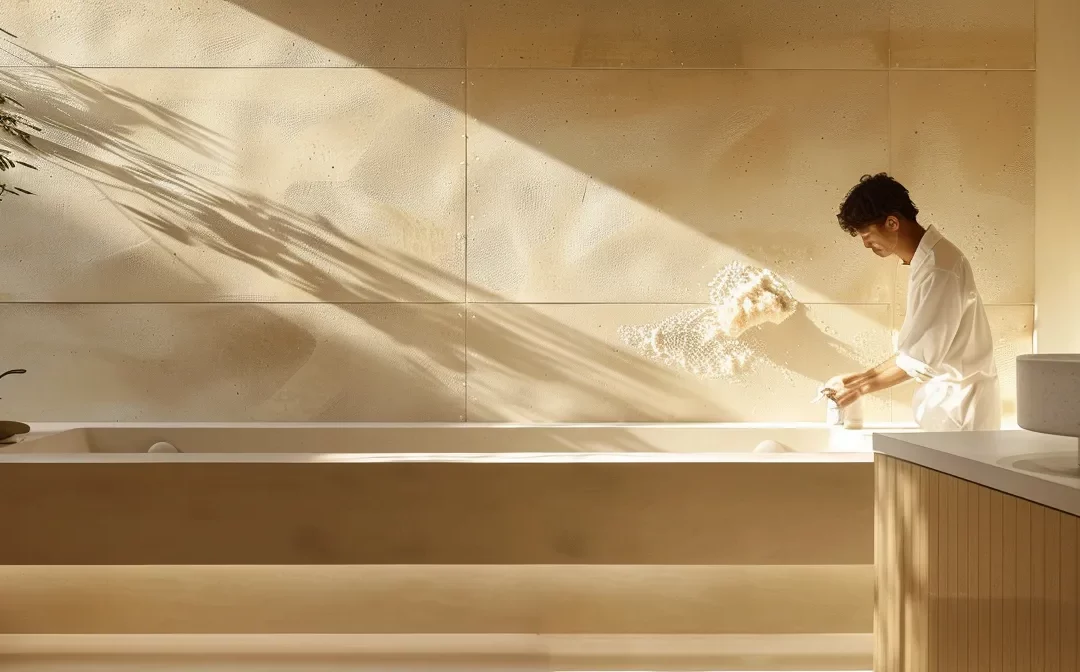How Resurfacing Your Bathroom Benefits the Environment
Bathroom and kitchen resurfacing offers not only a visual upgrade to your spaces but also a sustainable choice for the environment. With insights from the Master Builders Association Victoria, you’ll discover how resurfacing minimizes waste and reduces the presence of moisture, stains, and dust that can compromise your home’s quality. By opting for this eco-friendly solution, you can enjoy a refreshed bathroom while contributing to a greener planet. Embracing bathroom resurfacing means making a conscious decision for both aesthetic and environmental health. Keep reading to find out how this choice benefits the environment and enhances your living space.
Key Takeaways
- Resurfacing promotes sustainability by minimizing waste and reusing existing materials
- Choosing eco-friendly resurfacing materials enhances indoor air quality and reduces harmful chemical exposure
- This method significantly lowers your carbon footprint compared to traditional renovation practices
- Employing water-efficient fixtures during resurfacing contributes to conservation and lowers utility bills
- Investing in resurfacing supports durable solutions while preserving the aesthetic integrity of your bathroom
Introduction to the Eco-Friendly Side of Bathroom Resurfacing
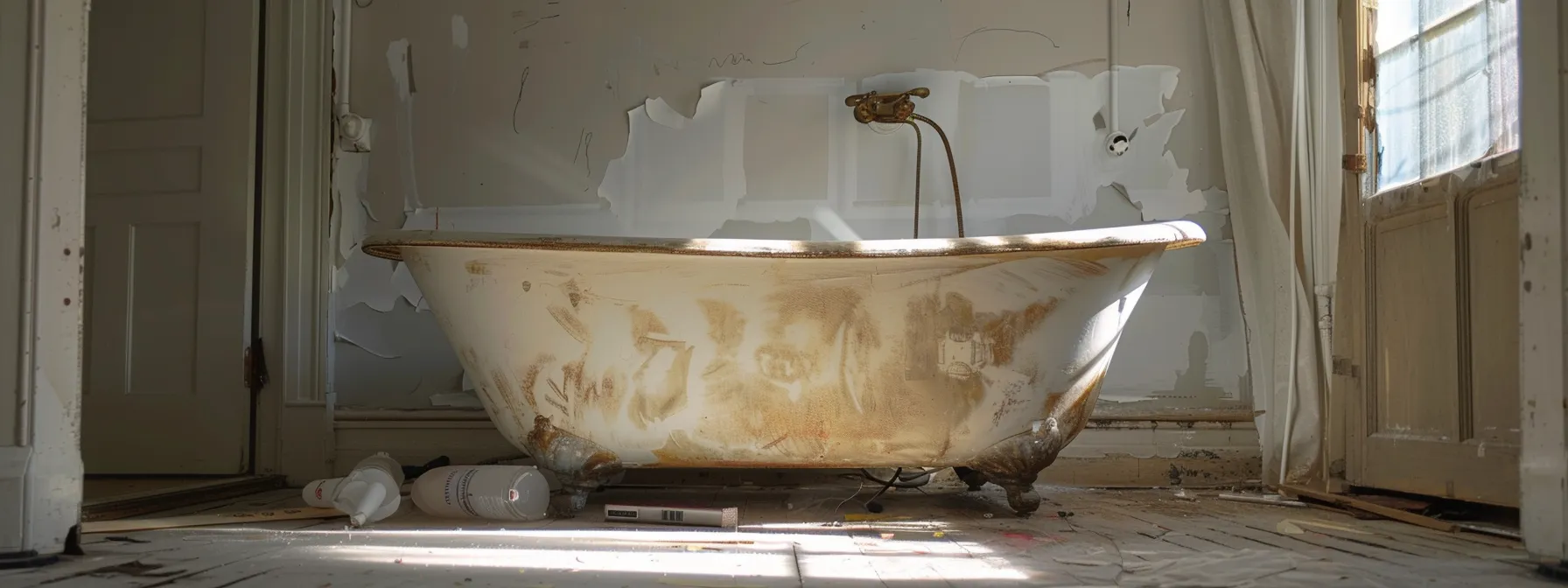
When considering a Bathroom and Kitchen Resurfacing, the eco-friendly approach of resurfacing serves not only aesthetic purposes but also contributes to environmental sustainability. By choosing to reuse existing materials like cast iron bathtubs or oak cabinetry, you effectively minimize waste and reduce the need for new materials, which often come at a significant expense. This method promotes the idea that you can maintain functionality and style without sacrificing the planet.
Resurfacing allows you to breathe new life into old surfaces without discarding them. Imagine your worn-out wood fixtures transformed through a simple Bathroom and Kitchen Resurfacing process, thereby extending their lifespan and reducing landfill contributions. This practice not only conserves resources but also lowers the carbon footprint associated with manufacturing and transporting new products.
Moreover, opting for Master Builders Association Victoria resurfacing means you prioritize quality over quantity. High-quality materials like cast iron and oak can be refurbished instead of replaced, emphasizing longevity and sustainability. By choosing to invest in Bathroom and Kitchen Resurfacing eco-conscious methods, you contribute to a greener future while enjoying a beautiful, updated bathroom.
As you explore the eco-friendly benefits of bathroom resurfacing, you’ll discover a powerful way to minimize your environmental impact. Ready to learn how this choice not only enhances your space but also significantly reduces waste?
Reducing Waste by Choosing to Resurface
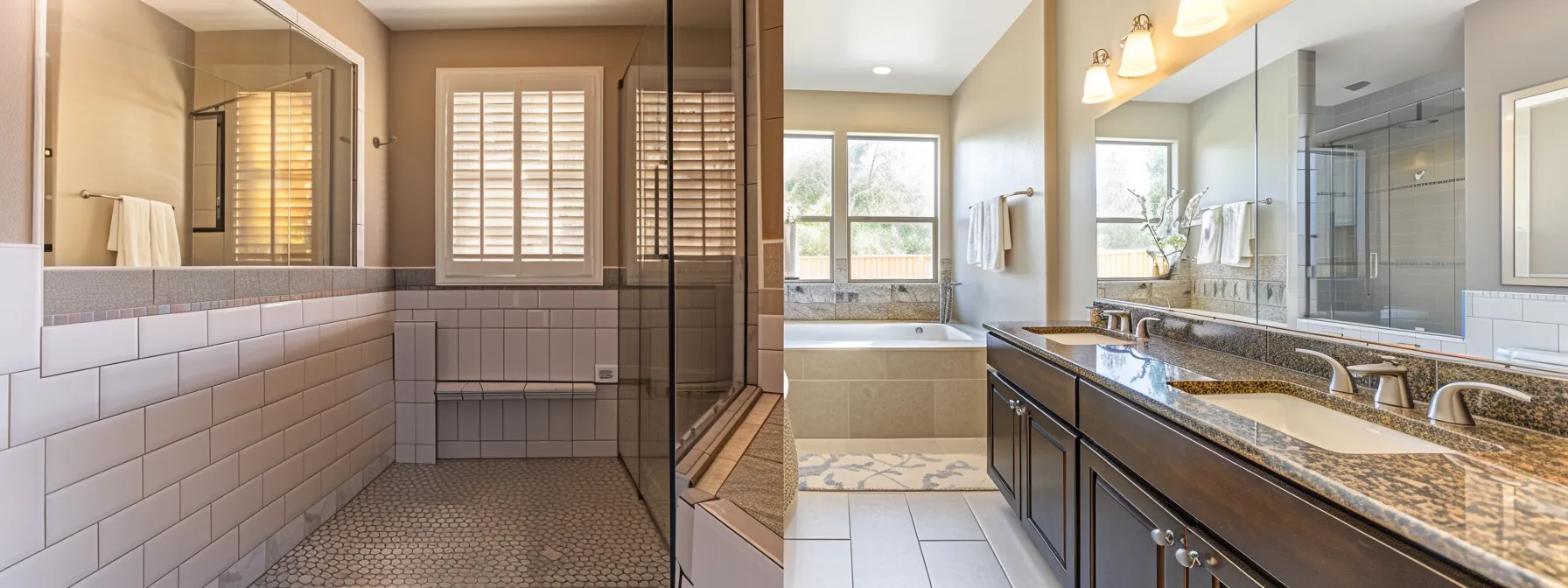
Resurfacing your bathroom dramatically reduces the amount of construction debris sent to landfills. Unlike traditional renovation methods that often lead to the disposal of mold-infested items or outdated fixtures, resurfacing allows you to retain and refresh what you already have. By extending the life of existing elements like fiberboard cabinetry and outdated grout, you not only save on costs but also minimize your environmental impact. Embracing this sustainable approach ensures you make a positive contribution to the health of our planet while enjoying the aesthetic benefits of a modernized bathroom.
Less Construction Debris Sent to Landfills
By choosing to resurface your bathroom, you take an active step toward sustainability and significantly reduce the amount of construction waste generated during renovations. Instead of discarding old fixtures that may contain harmful oil-based products, you opt to refresh what you already possess, alleviating the headache that comes with extensive renovations. This approach not only spares your space from clutter but also conserves valuable materials, such as cartridges found in older faucets, that can be successfully restored rather than wasted.
Extending the Life of Existing Fixtures
Extending the life of existing fixtures through bathtub resurfacing is a practical approach that emphasizes sustainability in home improvement projects. By using solvent-based or water-based polyurethane finishes, you can protect and revitalize surfaces, making them look new without the need for replacement. This environmentally friendly method not only preserves materials but also reduces the demand for new products, contributing to a healthier planet.
Choosing to resurface not only minimizes waste but also opens the door to sustainable choices. By incorporating eco-friendly materials, you can elevate your renovation while protecting the environment.
The Role of Eco-Friendly Materials in Resurfacing
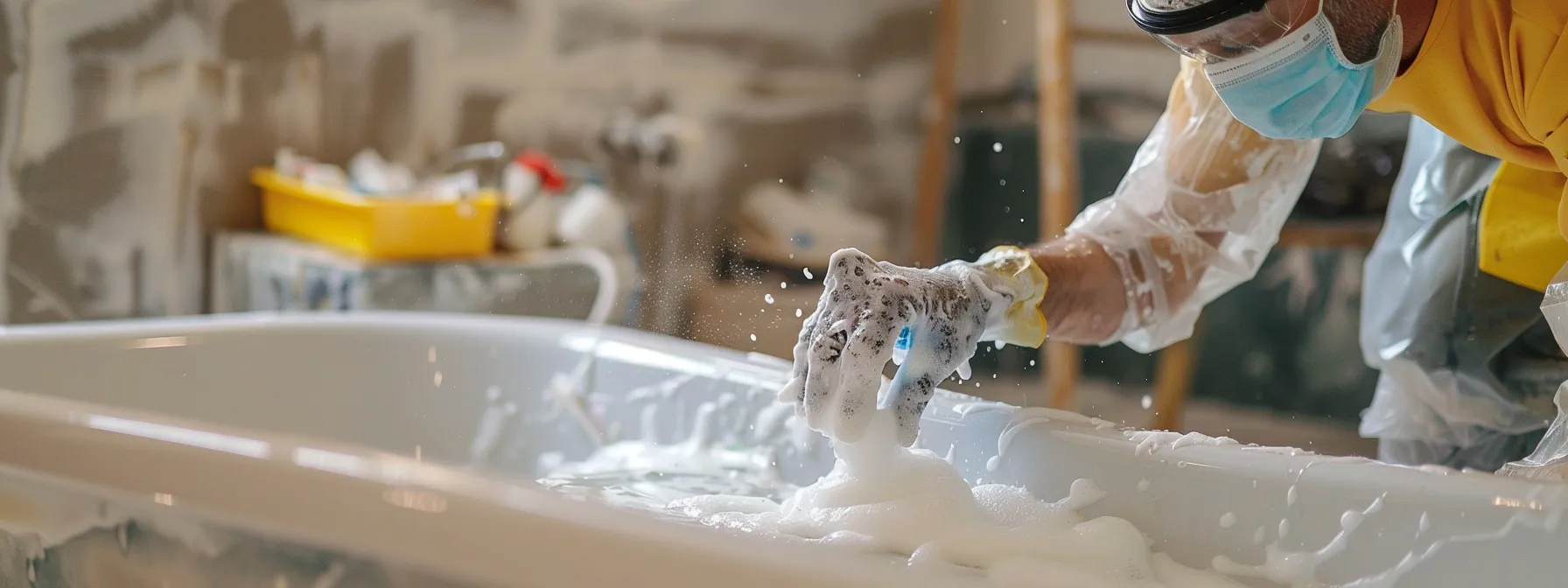
Adopting eco-friendly materials during the resurfacing process significantly mitigates the exposure to harmful substances commonly found in traditional renovation products. By utilizing low-VOC (volatile organic compound) resurfacing materials, you not only prioritize your health but also contribute to cleaner indoor air quality. For instance, during cabinet refinishing or bathtub resurfacing, opting for sustainable products reduces the release of toxic gases, making the environment safer for you and your family. Additionally, the use of personal protective equipment becomes less critical, as these organic compounds pose lower health risks. Therefore, selecting sustainable resurfacing options fosters a healthier living space while still achieving remarkable aesthetic results.
The Use of Low-Voc Resurfacing Materials
Opting for low-VOC resurfacing materials during projects such as tub reglazing and cabinetry refinishing significantly enhances the sustainability of your bathroom renovation. These products, designed to wear well over time, offer a protective veneer that revitalizes surfaces without compromising indoor air quality. By choosing safer options for your shower and other fixtures, you contribute to a healthier environment while enjoying beautiful, long-lasting results.
Benefits of Using Sustainable Resurfacing Products
Utilizing sustainable resurfacing products for your bathroom renovation can significantly reduce the carbon footprint associated with manufacturing new materials. By refraining from purchasing new particle board or other composites, you effectively minimize waste and avoid contributing to the greenhouse gases emitted during production. Furthermore, these eco-friendly options often have improved durability, reducing the likelihood of issues such as leaks, which can lead to costly repairs in the future.
Eco-friendly materials are just the beginning of an exciting journey toward sustainability. Let’s uncover how bathroom resurfacing can play a pivotal role in lowering your carbon footprint.
Lowering Carbon Footprint With Bathroom Resurfacing
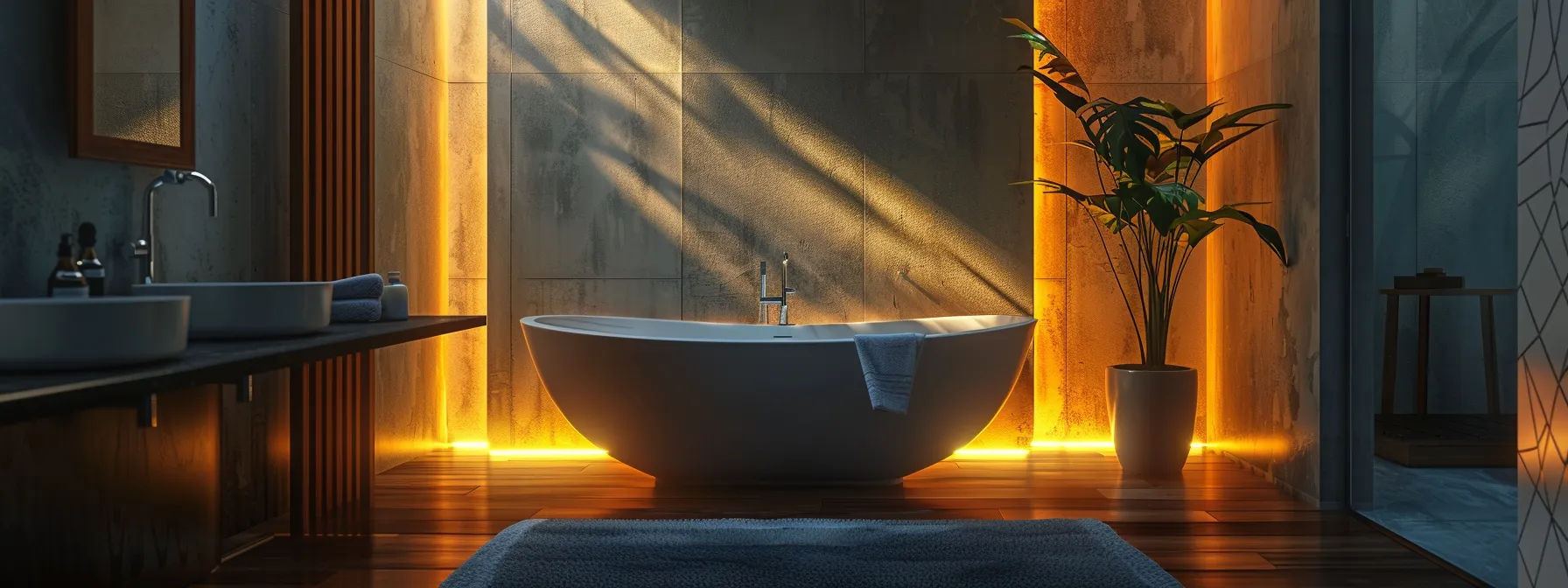
By selecting bathroom resurfacing, you significantly decrease the demand for new raw materials, which often come with high costs and environmental impacts. For instance, opting to revitalize a fiberglass tub instead of purchasing a new plastic model means less resource extraction and a reduction in waste. Moreover, resurfacing minimizes energy consumption during manufacturing, as it requires far less energy compared to creating brand new fixtures. This energy efficiency not only contributes to a smaller carbon footprint but also enhances the beauty and functionality of your space without compromising your environmental values. Ultimately, you are making a conscious choice that benefits both your home and the planet.
Decreasing the Demand for New Raw Materials
When you choose bathtub refinishing over purchasing a new fixture, you directly decrease the demand for new raw materials like lumber and plastics. By rejuvenating existing elements, such as a worn kitchen cabinet, you support sustainability and minimize the strain on natural resources. This approach not only helps reduce air pollution associated with the manufacturing of new products but also reflects a commitment to eco-friendly practices, allowing you to enjoy your updated space without compromising the environment.
Minimizing Energy Consumption in Manufacturing
By choosing to resurface your bathroom, you actively contribute to minimizing energy consumption during manufacturing. The process requires significantly less energy than producing new materials such as plywood or tile, particularly when you opt for environmentally friendly varnish finishes. This reduction in energy use not only lessens your carbon footprint but also maintains the beauty and functionality of your space.
Bathroom resurfacing goes beyond reducing carbon footprints; it also plays a crucial role in preserving our most precious resource. By opting for resurfacing, you can significantly contribute to water conservation efforts while enhancing your space’s beauty.
How Bathroom Resurfacing Supports Water Conservation
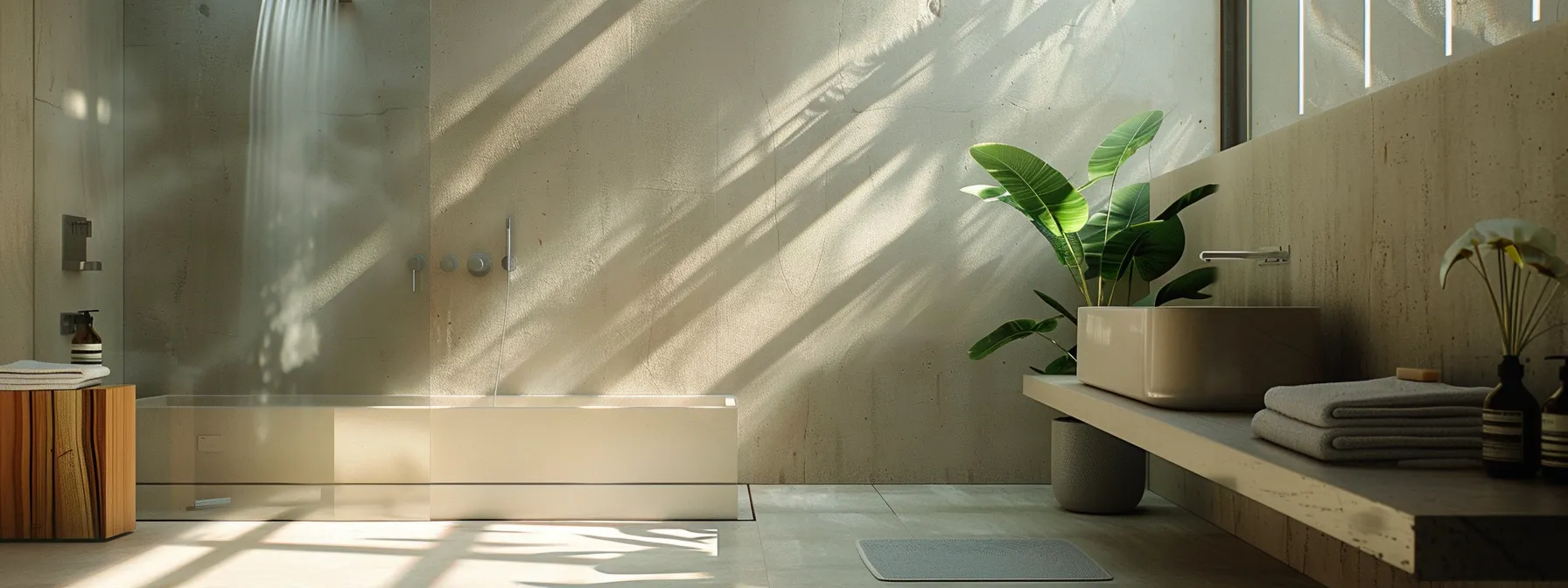
Resurfacing your bathroom not only enhances its aesthetics but also plays a vital role in promoting water conservation. By reinforcing existing fixtures, you prevent leaks that waste precious resources, demonstrating a commitment to sustainability. Additionally, incorporating water-efficient fixtures into your resurfacing projects further elevates their usability while reducing water consumption. Choosing this eco-friendly path leads to meaningful contributions to the environment, benefiting both the customer and the planet. By investing in these solutions, you help minimize the amount of waste sent to landfills and foster a more sustainable future for all.
Preventing Leaks Through Reinforcement
Preventing leaks through reinforcement is a crucial aspect of resurfacing your bathroom. By applying durable materials to your existing tub and tile, you can significantly reduce the risk of water damage and enhance the longevity of your fixtures. Investing in quality resurfacing ensures that areas around your marble countertops and siding remain sealed, providing additional protection against leaks that can disrupt your home environment.
- Assess the condition of your tub and tile for potential leaks.
- Choose high-quality resurfacing materials to reinforce existing structures.
- Ensure proper sealing around marble and siding to protect from water damage.
- Regularly check drawers and cabinets for signs of moisture.
Using Water-Efficient Fixtures in Resurfacing Projects
Incorporating water-efficient fixtures during your bathroom resurfacing project is a smart way to enhance sustainability. Options like bamboo and wood veneer taps not only provide aesthetic appeal but also help to reduce water flow, making them an energy-efficient choice. While the initial price might be higher than traditional fixtures, the long-term benefits in water savings justify the investment, ultimately lowering complexity in your plumbing needs.
Implementing water-efficient fixtures ensures that you’re taking responsible steps toward conservation, making a meaningful impact on both your utility bill and the environment. Choose fixtures that complement your design and prioritize efficiency:
By investing in bathroom resurfacing, you’re not just saving water; you’re also enhancing your home’s overall environment. Dive into the next key benefit: how resurfacing significantly improves indoor air quality for a healthier living space.
Promoting Healthier Indoor Air Quality Through Resurfacing
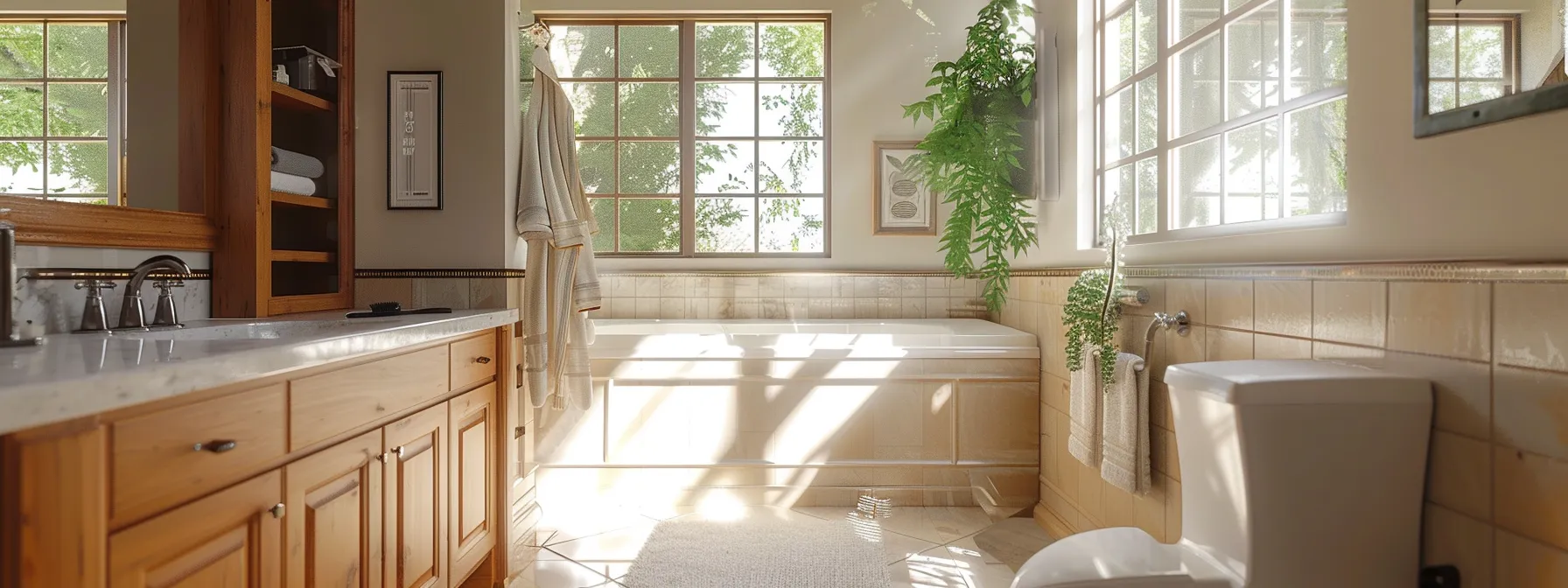
Resurfacing your bathroom goes beyond aesthetic improvements; it plays a vital role in enhancing indoor air quality by minimizing your exposure to harmful chemicals. By avoiding abrasive or toxic substances often found in traditional renovation methods, you promote a safer living environment. Selecting coatings and resurfacing materials, such as mineral-based finishes for porcelain fixtures or eco-friendly options for wood grain cabinetry, supports a cleaner atmosphere in your home. Additionally, cabinet refacing with sustainable materials can further reduce volatile organic compounds (VOCs), ensuring that you enjoy a refreshed bathroom without compromising the health of your indoor air. This deliberate choice not only safeguards your health but also contributes to a more sustainable future.
Avoiding the Use of Harmful Chemicals
Avoiding harmful chemicals during bathroom renovations is key to promoting better indoor air quality. By choosing eco-friendly options for tub refinishing and tile refinishing, you not only protect the environment but also enhance the safety of your space. When selecting materials for your sink or lighting, ensure they are free of volatile organic compounds (VOCs) to create a healthier atmosphere for you and your family:
Selecting Resurfacing Materials That Promote Cleaner Air
Selecting resurfacing materials that promote cleaner air is a critical decision for your bathroom renovation. Research shows that many traditional replacement products release harmful odors and volatile organic compounds (VOCs), which can affect your indoor habitat. By opting for eco-friendly materials backed by a warranty, you not only ensure a healthier living space but also contribute positively to the environment.
Resurfacing your bathroom can improve the air quality in your home, but its advantages extend far beyond that immediate benefit. Discover how this transformation contributes to a healthier planet in the long run.
The Long-Term Environmental Benefits of Bathroom Resurfacing
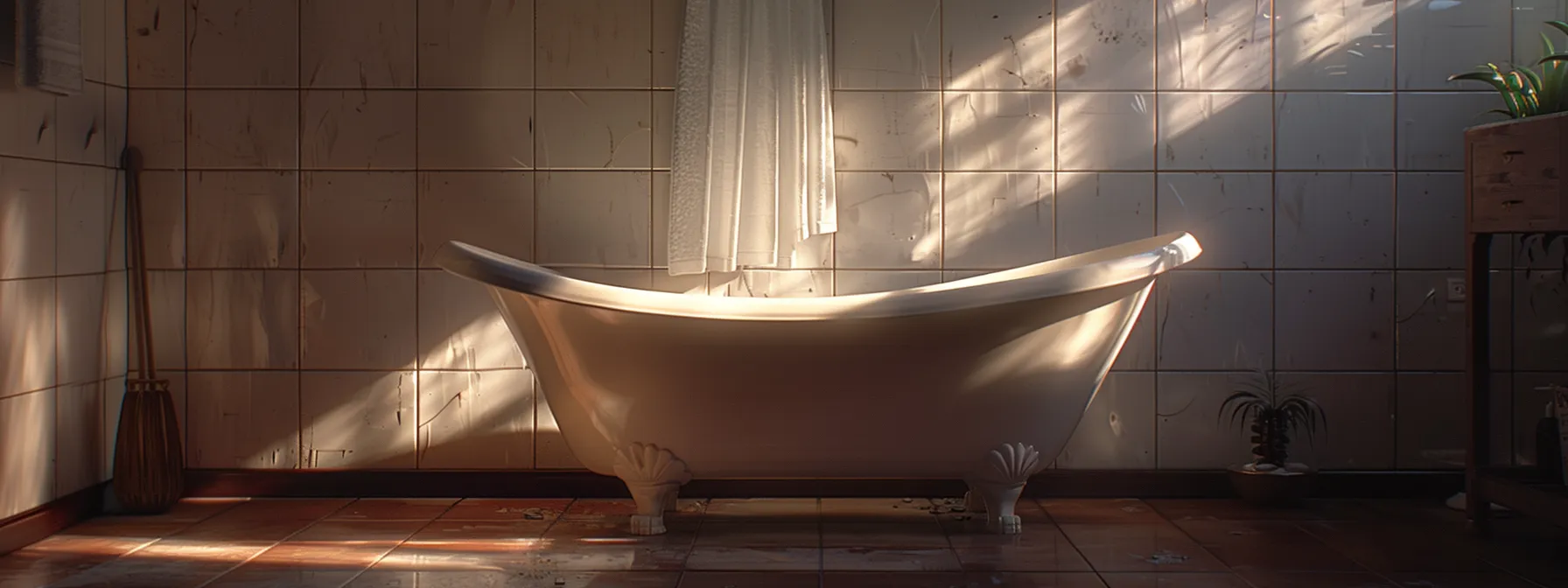
Resurfacing your bathroom plays a pivotal role in fostering a culture of reuse and recycling, particularly as it relates to existing surfaces like countertops and ceramic tiles. By opting for services such as bathtub refinishing, you contribute to sustainable home improvement practices that prioritize the planet’s well-being. This responsible approach not only reduces waste but also minimizes the environmental impact associated with manufacturing new materials. Moreover, as you enhance your bathroom’s aesthetics and functionality, you can create a more effective ventilation system, ensuring a healthier indoor environment. The decision to resurface reinforces the engine of sustainability in your home, demonstrating that you value both style and ecological responsibility.
Encouraging a Culture of Reuse and Recycling
By choosing tub reglazing services, you actively participate in encouraging a culture of reuse and recycling within your home. This approach not only repurposes existing materials like iron bathtubs but also significantly lowers your carbon footprint. Renovation projects that focus on restoring rather than discarding highlight the value of sustainable practices, ensuring that the environment benefits alongside your beautifully updated space.
Contributing to Sustainable Home Improvement Practices
By investing in bathroom resurfacing, you actively contribute to sustainable home improvement practices that counteract the risks associated with traditional methods, such as excessive cabinet replacement. This approach addresses wear and tear, minimizing the pressure to frequently replace worn fixtures or materials that can become damaged through daily use, including exposure to soap residue. Emphasizing restoration over replacement not only supports environmental stewardship but also preserves the aesthetic integrity of your bathroom.
